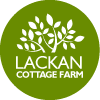In theory, low impact building is something that you hope people would welcome: low cost shelter that uses minimal resources, that people can put together themselves, and which doesn’t stand out like a sore thumb in the landscape. It could be cheap to heat, to run, and be a solution to the housing problems that we hear so much about these days.
Why then does it run up against so much opposition. Despite the Welsh Assembly Government’s One Planet Development Policy, which states that:
applications for Low Impact Development under TAN6 / One Planet Development continue to be turned down. This week is was the turn of the Pembrokeshire Coast National Park to turn down a really well thought out plan put in by Tom O’Kane. This was the one, we thought, that had to get through. But it didn’t, and that has caused much consternation, because despite there being a forward thinking national policy, local councils are still dominated by the same old attitudes, and business as usual thinking.
Here in Northern Ireland, the situation is somewhat different, as the idea of One Planet Living is far from the minds of our politicians, and who rely on a vague outline of ‘sustainability’. In response to a query to the Minister of the Environment, Alex Attwood, I received the following reply:
Needless to say that the majority of the Sustainable Development documents are focused on growth, economy, and are a million miles away from the sort of legislation we see in Wales. There is little likelihood that we will see anything approaching it in our lifetimes.
So what is to be done? We most certainly cannot rely on solutions to come from above here in Northern Ireland, but there is a growing grass roots movement that recognises that alternative solutions are possible.
In many ways our country is ideal for Low Impact type development. Farms here have remained relatively small; property prices have dropped to sensible levels; there are many disused cottages that are ideal homes with a little imagination. Certainly there is no shortage of suitable sites – what we are lacking is the planning policy to make the most of them.
So what to do? The interest is out there. Our Lammas film screening certainly attracted plenty of attention, and so in conjunction with Prof. Tom Woolley, we’re hoping to be part of a series of eco building courses run this year, which together with our own smallholding experiences could be a way for people to find out whether this is the way they would like to live.
Perhaps the way forward is to seek forgiveness rather than ask permission. That is the way that the movement developed in Wales, and we have the benefit of hindsight. At the moment we don’t know of anyone living in anything akin to a roundhouse, but that may change in the next year or so.
Sooner or later someone is either going to have a planning department come and demand that they regularise their low impact building (whatever form that may take), or they will have to put in an application and see what happens. It might be us, it might not, but it will happen eventually.
So if you saw the Lammas film, you’ll remember that as Jasmine says – “Everyone says they want to do this, so where are you?”. Let us know – especially if you fancy participating in some interesting eco building, at an undisclosed location somewhere in County Down…..
If you would like to know more about Low Impact Development, we have some more information here, and you could also go along and look at the excellent Living In the Future series of videos.







Keep me posted? Please